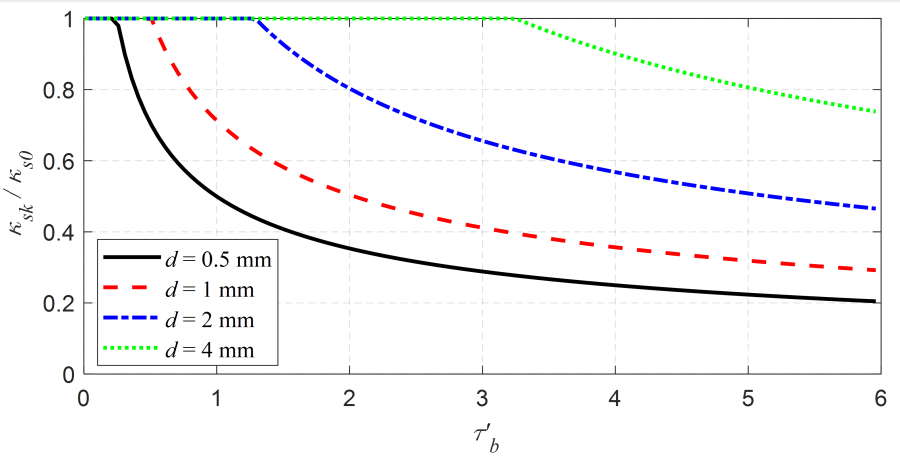The fractional bed change is calculated as
| 1) |
\rho _{sk}(1-\phi _{b})\left(\frac{\partial z_{b}}{\partial t}\right)_{k}=D_{tk}-E_{tk}+\nabla \cdot \left(\kappa _{bk}\left| q_{bk}\right| \nabla z_{b}\right) |
where
z_b = bed elevation with respect to the vertical datum [L]
ρ_{sk} = grain class particle density [M/L3]
ϕ_{b} = porosity of the eroded and deposited material [ - ]
D_{tk}= total-load deposition rate [M/L2/T]
E_{tk} = total-load erosion rate [M/L2/T]
|q_{bk}| = bed-load mass transport rate magnitude [M/L/T]
κ_{bk} = empirical bed-slope coefficient for grain class k [ - ]
The last term on the right-hand side of the above equation accounts for bed-slope effects. The bed-slope term has the effect of moving sediment downslope and thus smoothing the bathymetry. Therefore, it improves stability. Another advantage of the term is that it is independent of the transport formula and therefore can be applied irrespective of the transport formula formulation.
The total bed change is defined as the sum of the fractional bed changes as
| 2) |
\frac{\partial z_{b}}{\partial t}=\sum _{k}\left(\frac{\partial z_{b}}{\partial t}\right)_{k} |
Bed-Slope Coefficient
The bed-slope coefficient is calculated using a following formula (e.g. Koch and Flokstra 1981; Kovacs and Parker 1994; and Parker et al. 2003)
| 3) |
\kappa _{bk}=\kappa _{b0}\sqrt{\frac{\tau _{crk0}}{\max (\tau '_{b},\tau _{crk0})}} |
in which
κ_{b0} = empirical parameter approximately equal to 0.1 to 0.5 [ - ]
τ_{crk} = critical shear stress [M/L/T2]
τ'_{b} = bed skin shear stress [M/L/T2]
It is important to include a lower limit for the skin shear stress because not all transport formulas include a critical shear stress (e.g. Engelund-Hansen (1967) formula). A plot of the bed-slope coefficient is shown in the figure below. As the bed skin shear increases with respect to the critical shear stress, the effect of the bed-slope is decreased. Likewise, smaller grain classes will be less affected by the bed-slope compared to coarser grain classes because they will be in less contact with the bed and influenced more by the current than the bed slope.

Figure 7. Bed-slope coefficient as a function skin shear stress, \Tau'_b, and grain size diameter d. The critical shear stress for each grain size is calculated with the Soulsby and Whitehouse (1997) equation.